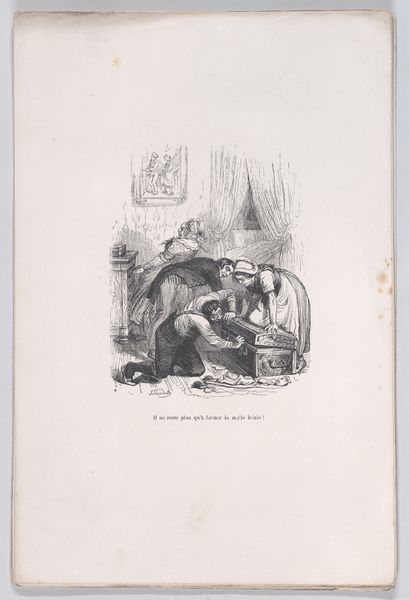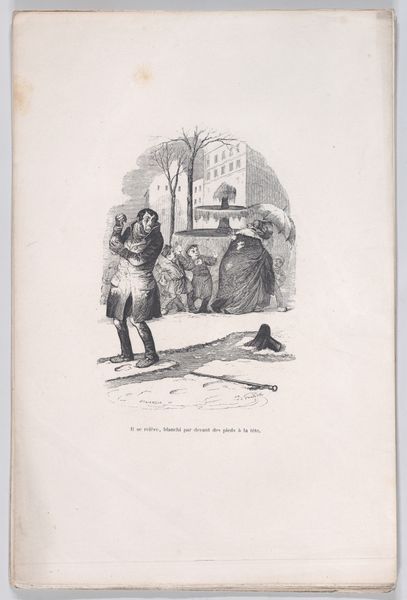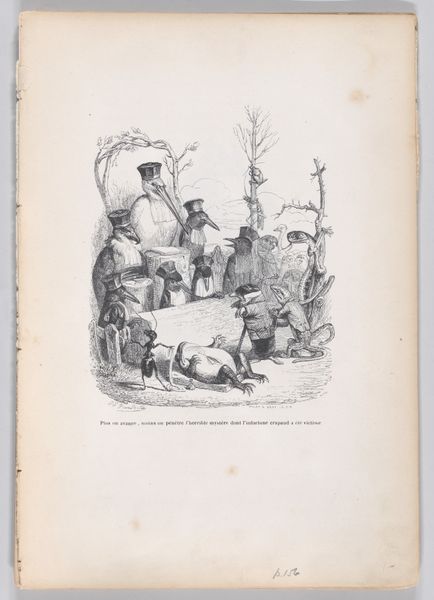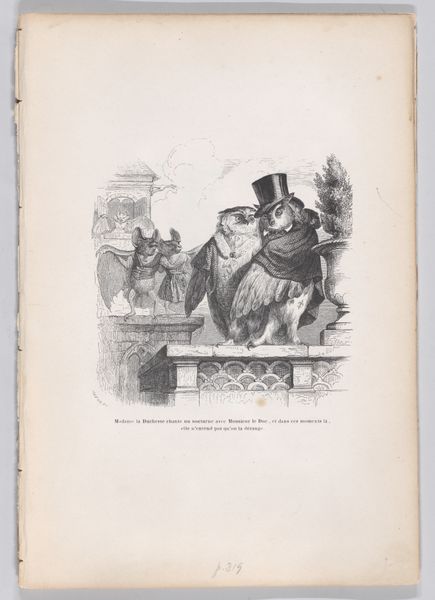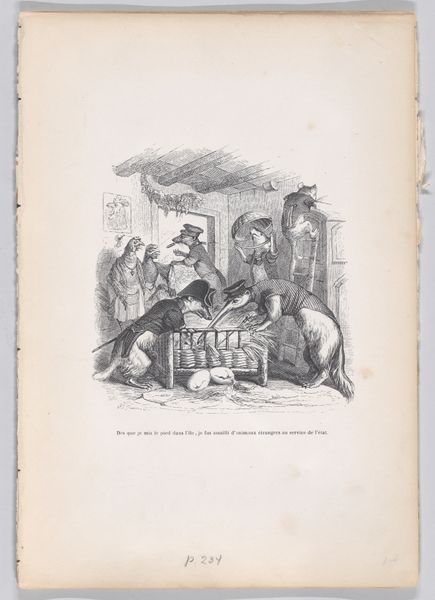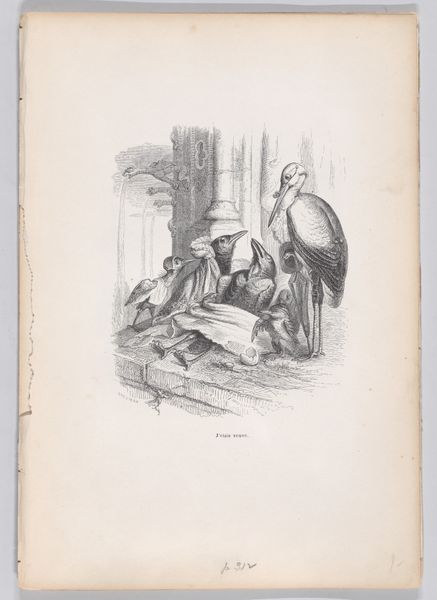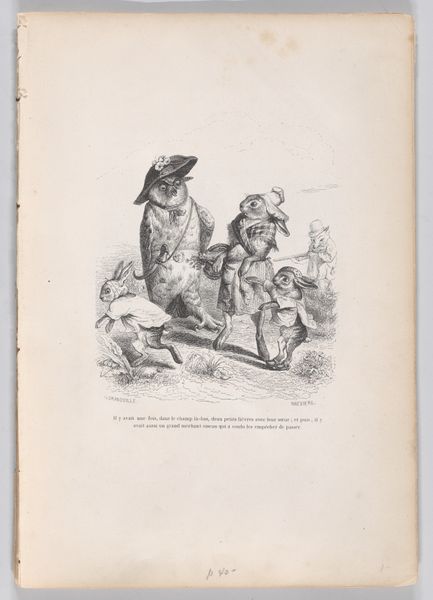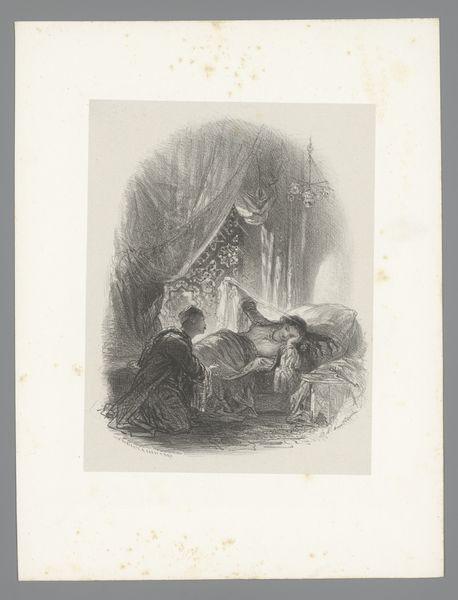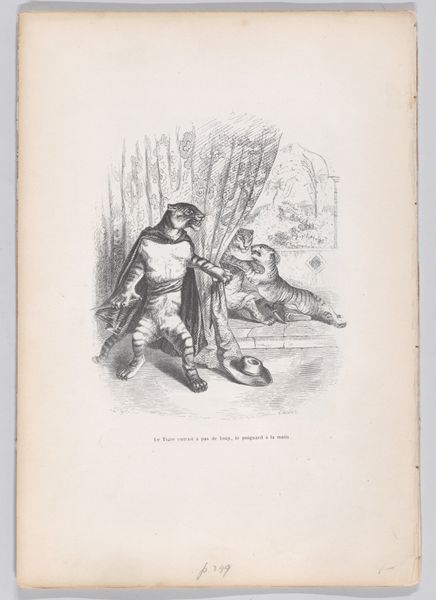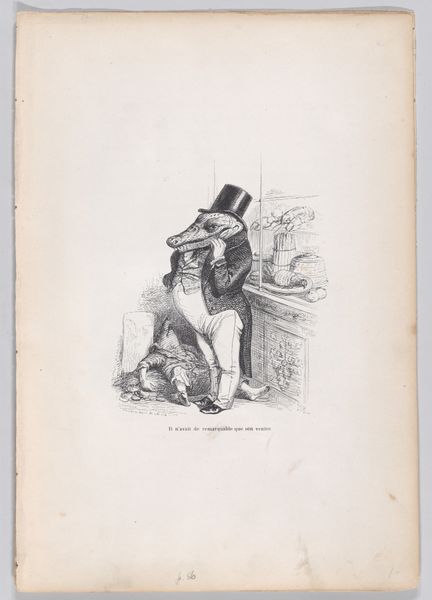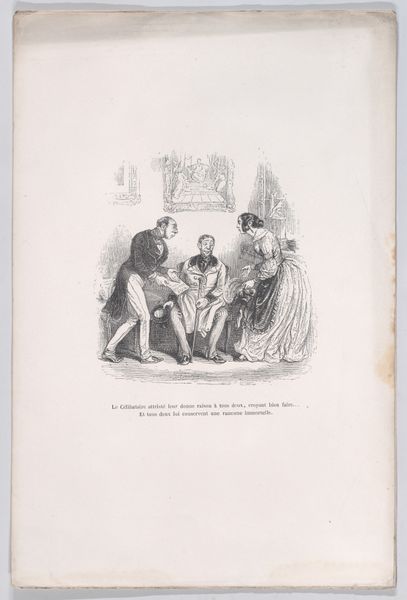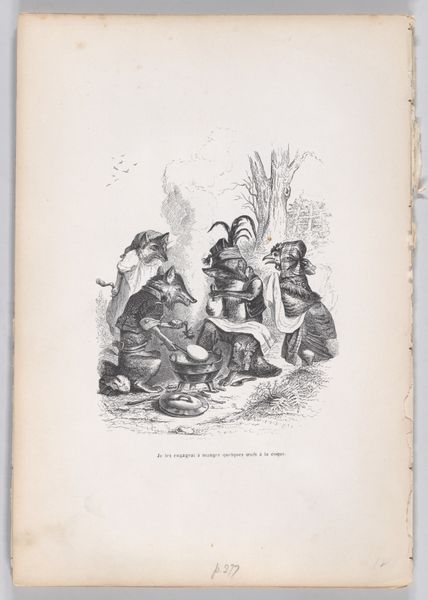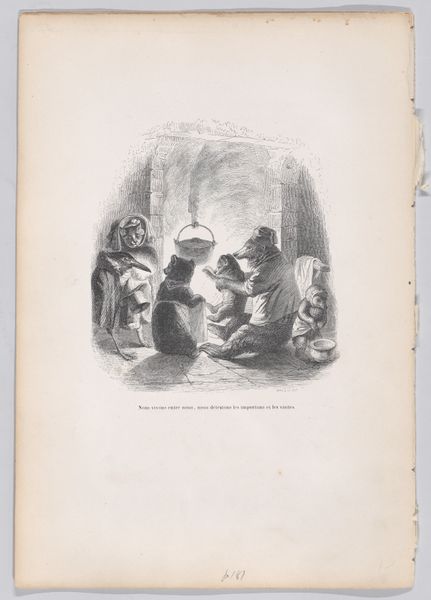
"At this frightful story, Zemire throws himself at Azor's feet" from Scenes from the Private and Public Life of Animals 1832 - 1852
0:00
0:00
drawing, print, engraving
#
drawing
#
narrative-art
#
fancy-picture
# print
#
caricature
#
figuration
#
romanticism
#
line
#
engraving
Dimensions: Sheet: 10 3/8 × 7 3/16 in. (26.3 × 18.3 cm)
Copyright: Public Domain
Curator: Let’s consider this engraving by J.J. Grandville, likely from between 1832 and 1852, entitled "At this frightful story, Zemire throws himself at Azor's feet." It's part of his series, "Scenes from the Private and Public Life of Animals." What is your initial impression? Editor: It strikes me as quite theatrical. The composition is dramatic, like a stage set, with the animals adopting highly expressive postures. There’s a clear hierarchy established by the kneeling figure and the looming porcupine. It's almost operatic in its intensity. Curator: Indeed. This piece invites us to think about power dynamics, both within the depicted scene and perhaps more broadly. We have a seemingly vulnerable figure at the mercy of one with formidable defenses—a porcupine no less. I am prompted to consider narratives around the politics of species. This era, the early 19th century, witnessed emerging animal rights and philosophical thinking. Editor: The choice of animals is interesting. Porcupines, in many cultures, have a history of being symbols of protection. This is ironic when positioned in an obviously aggressive scenario as displayed in Grandville's print. What emotional layers would be extracted from a recognizable image by his audiences? Curator: I agree. The Romanticism of this era often utilizes animals to reflect back to contemporary social commentary, class, and perceived morality. Note the contrast in Grandville’s work between detailed textures, especially the porcupine's quills, with those that border abstraction. There's an inherent contrast, suggesting something is not so fixed within societal behaviors. Editor: Look at the visual language beyond the primary figures! The statuary echoes bestial forms. This further complicates how one defines character and feeling within the composition. It is hard not to notice how those symbols enhance the meaning of animal conduct. What's he hinting about at animalistic impulses when we look closely? Curator: It could serve as a reminder of the social construction of human identities through contrasting symbolic figures, highlighting how arbitrarily "humane" traits get designated to humans against "brute" animals. Grandville urges one to understand the private and public lives intersect via coded biases. Editor: A thoughtful perspective that deepens our awareness of human versus animal nature. I initially perceived high drama in it! It makes you wonder how social identities can affect artistic creations. Curator: The enduring impact resides precisely in how we project ourselves, biases and all, into these animal dramas. I would offer to our visitors to delve deeply to find our most vulnerable aspects within what has been provided by Grandville’s careful symbolic gestures.
Comments
No comments
Be the first to comment and join the conversation on the ultimate creative platform.
